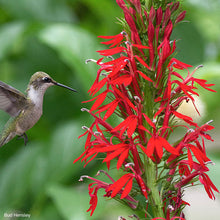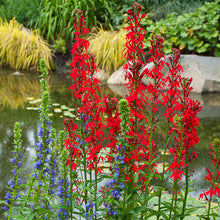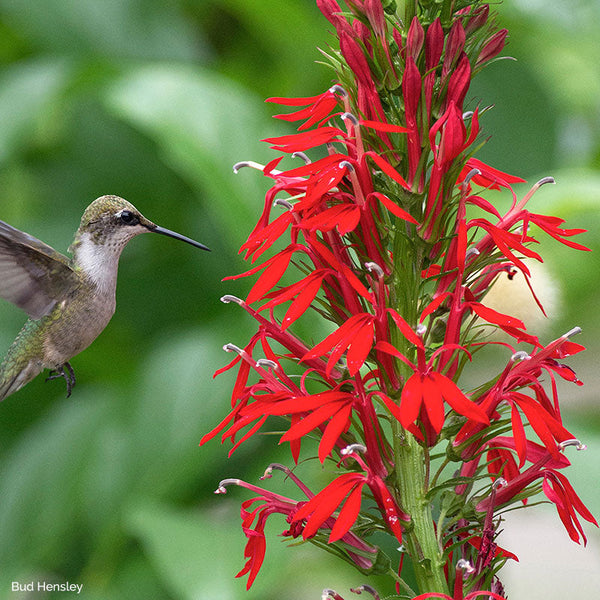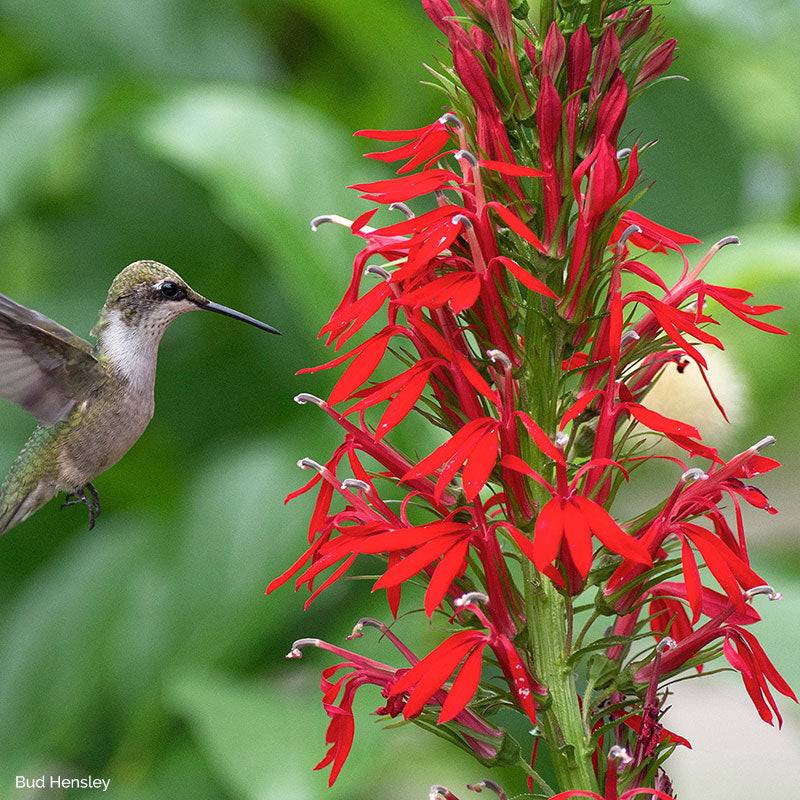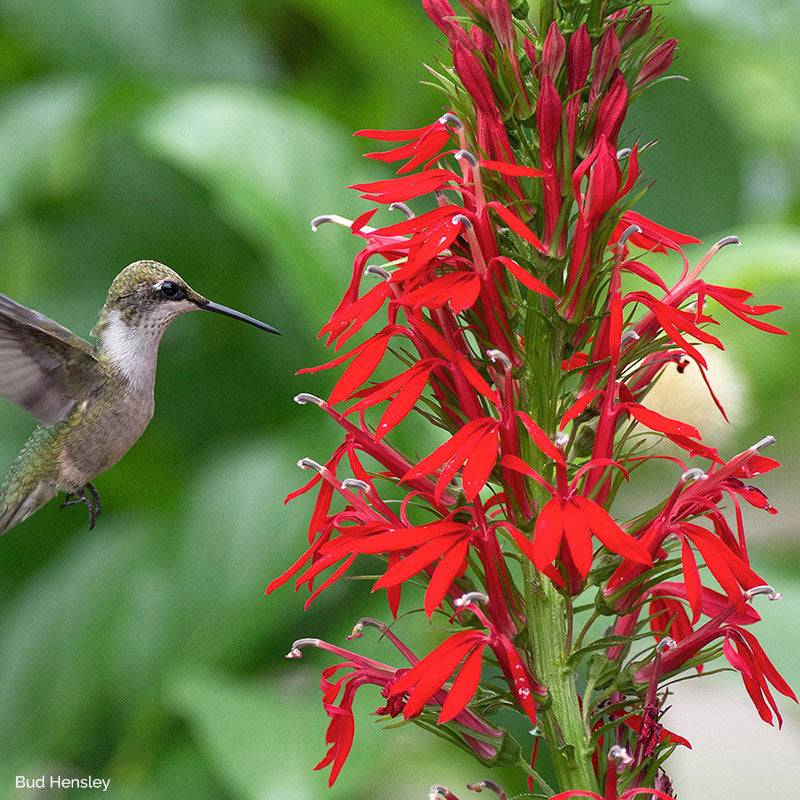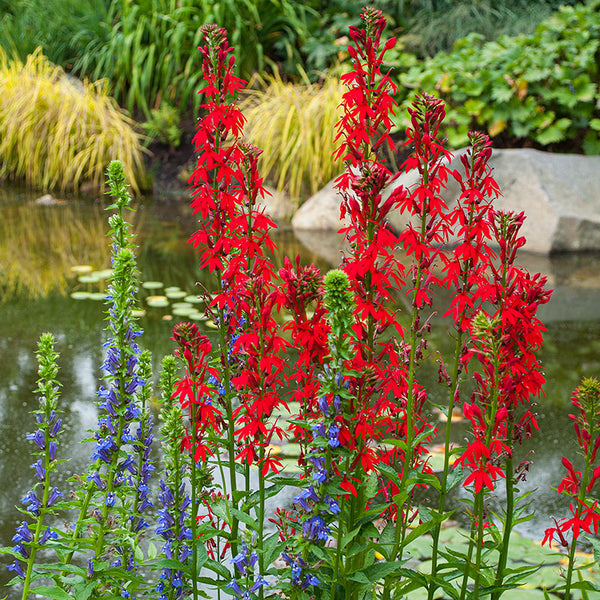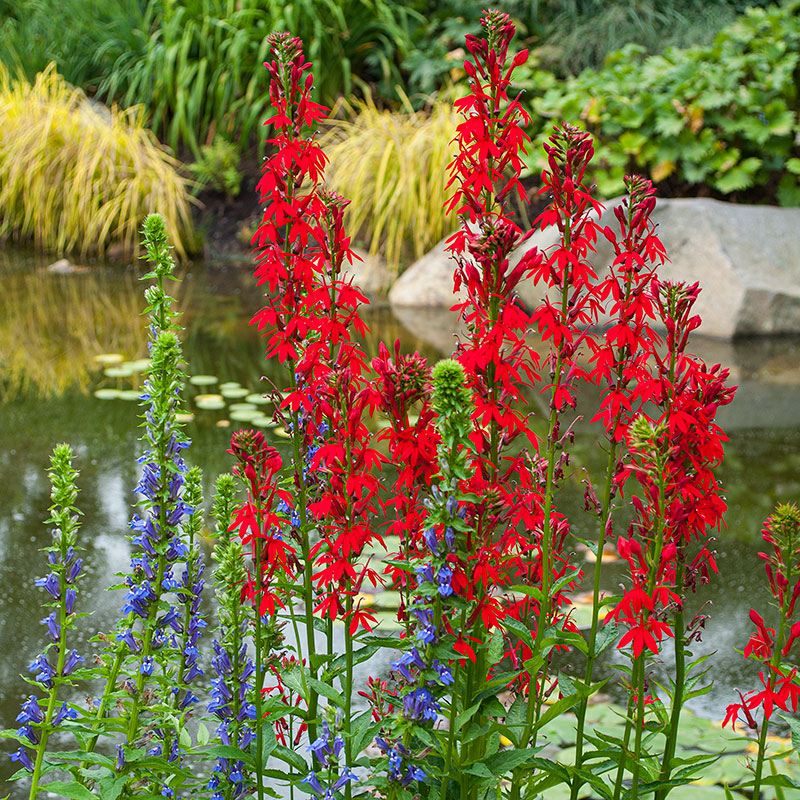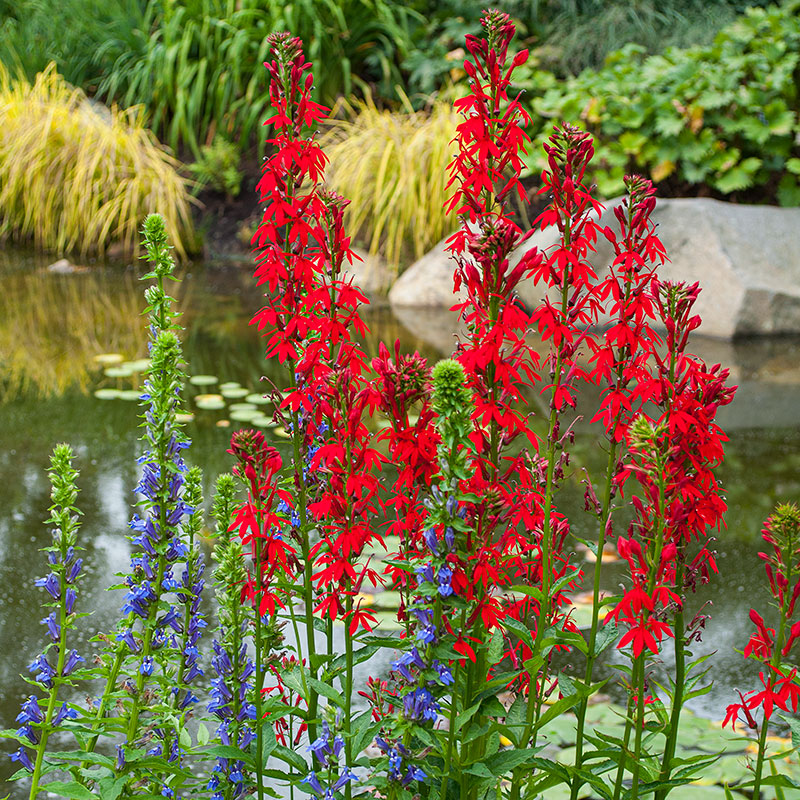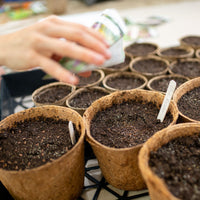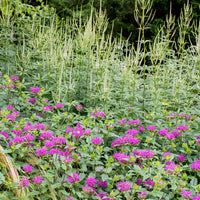Seed Packet
Lobelia - Cardinal Flower
Lobelia cardinalis
This native hummingbird favorite is easy to grow and makes the transition from its native stream-side habitat to the humus-enriched garden bed seamlessly. In late summer, blooming spires of sparkling red flowers punctuate wet meadows and pond edges, their brilliance evident even from a distance. In the early 1800s cardinal flower was gathered by Shakers to add to their store of medicinals.
SKU #S072






























